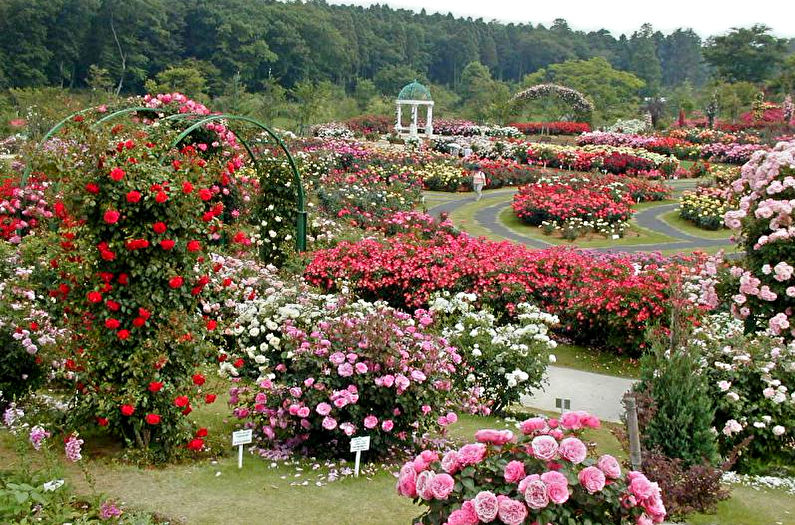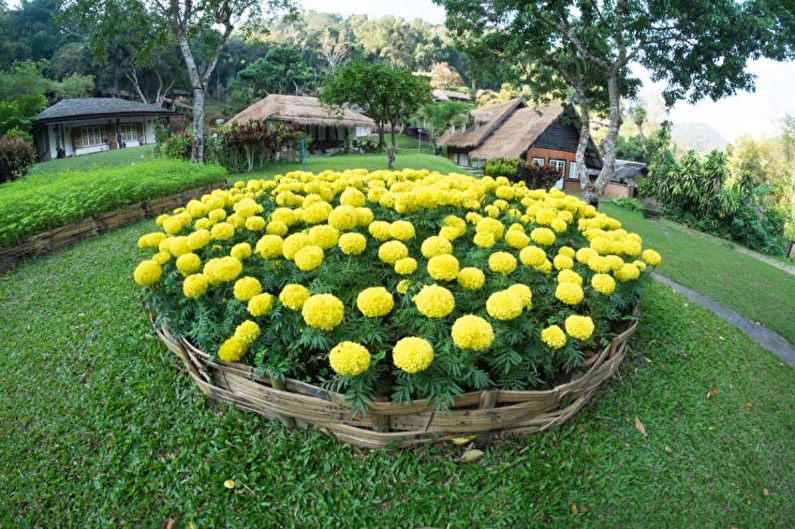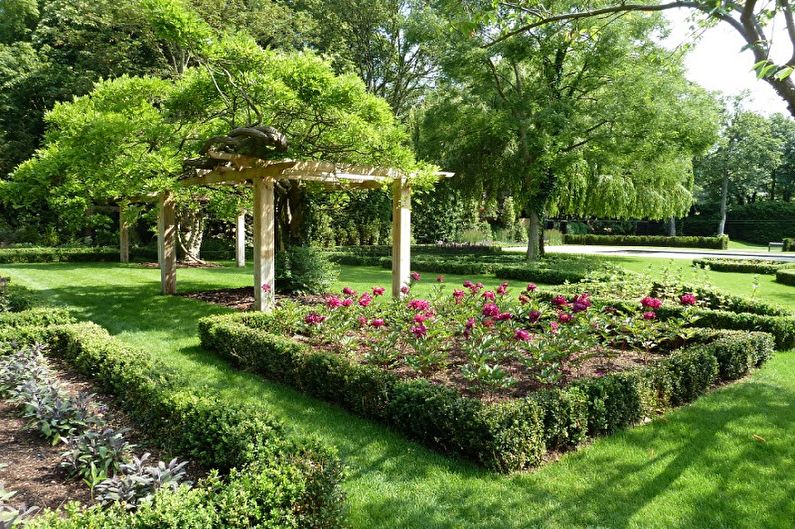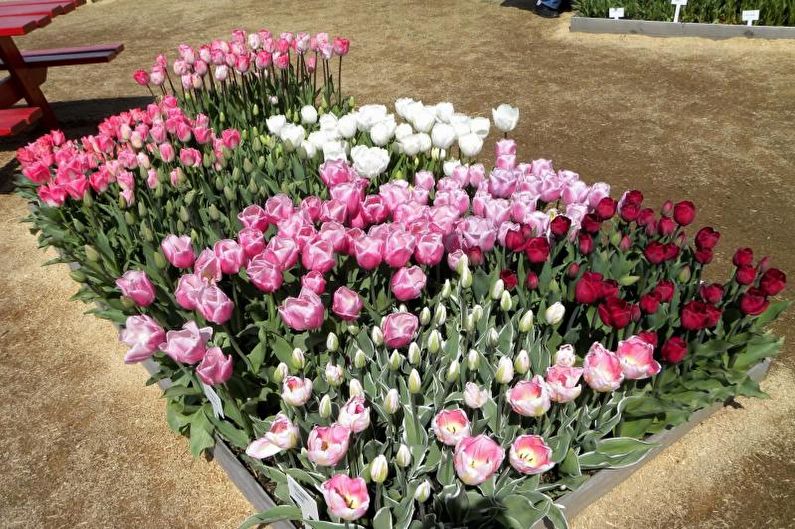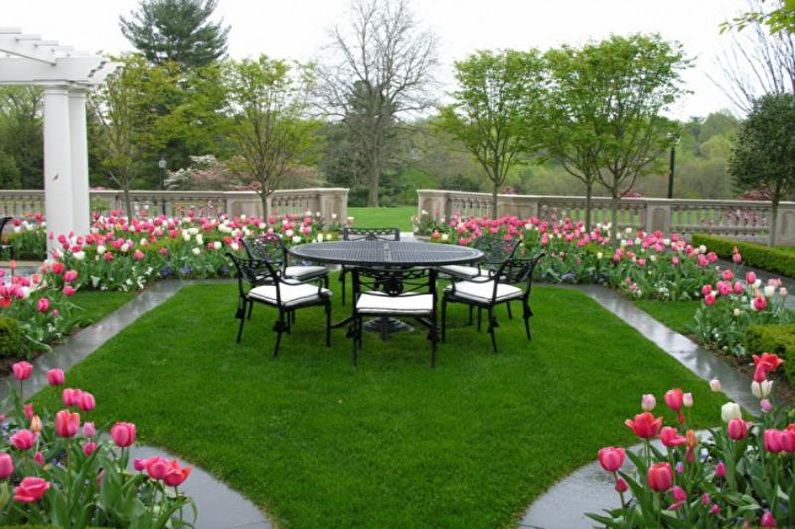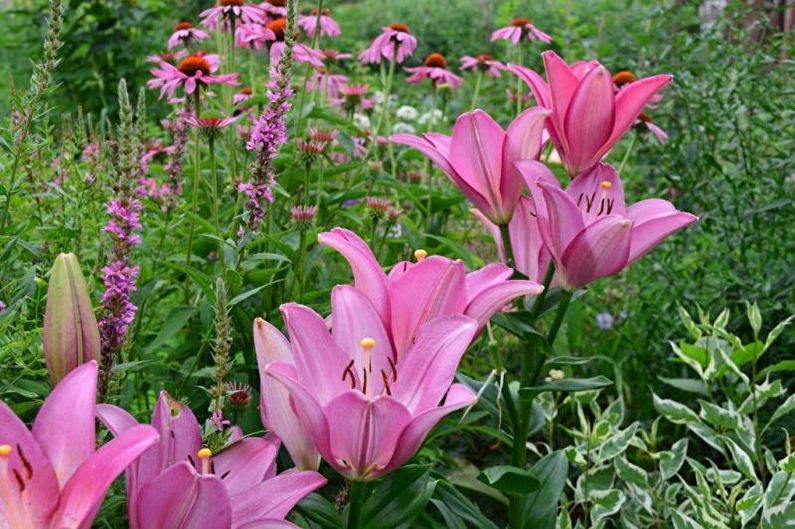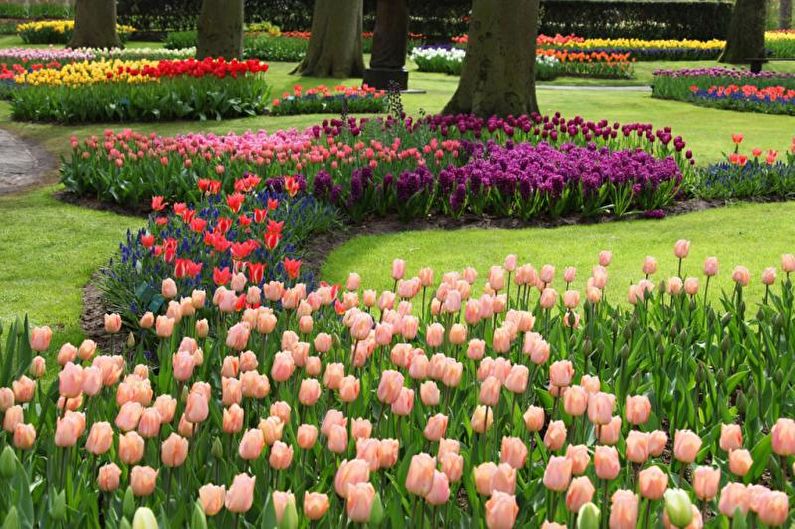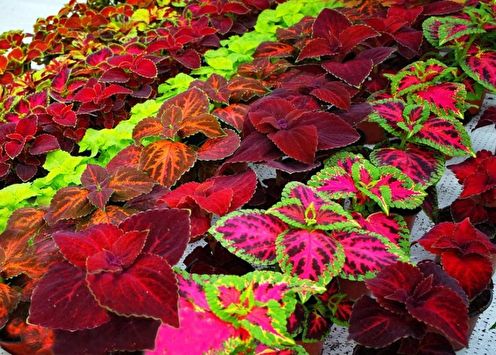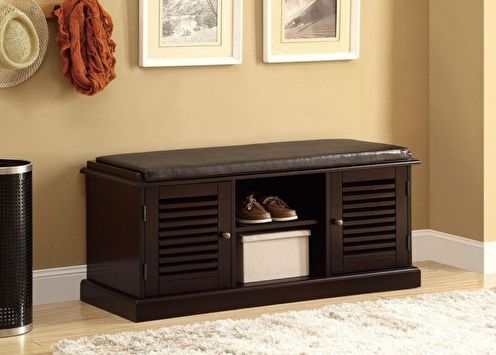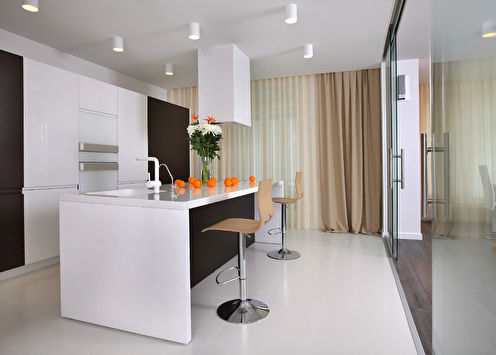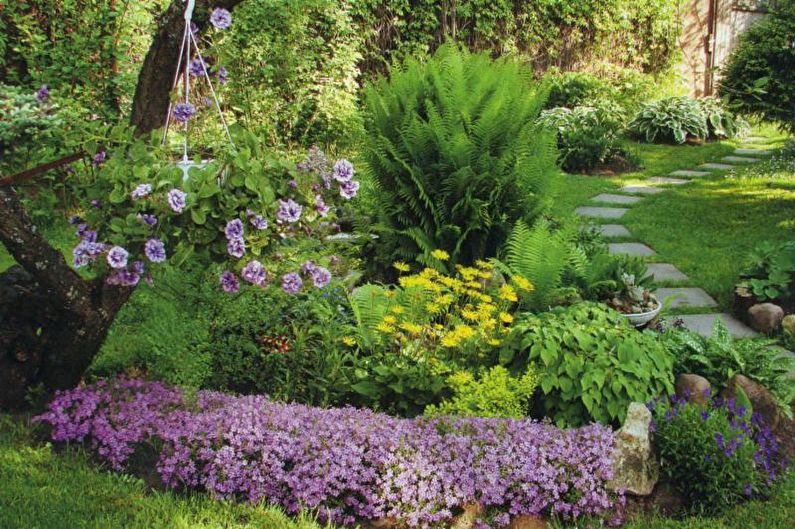
It's no secret that flower beds are able to transform both the park area and the ordinary suburban area. But the familiar and familiar element of landscape design is so diverse in its manifestations that it can amaze with its originality and sophistication. We have prepared a large selection of ideas for organizing our own beautiful flower garden, which will demonstrate your creativity, as well as organically fit into the surrounding area.
1. Border
A flower bed is a clearly defined bed of oblong shape. As a rule, its width is 25-50 cm. The vegetation organized in this way will help to focus on the details of the landscape and mark the boundaries of the lawn or path.
The most successful effect is produced by plants up to 50 cm high. It is best to turn to green decorative options that are always attractive, and not only during their flowering period. On the other hand, flowering varieties are very attractive, and many of them are able to maintain a presentable appearance for a long time. The border can be formed from annuals (marigolds, verbena, ageratum, Iberis, lobelia) or perennials (arabis or girlish feverfew).
Contours should be highlighted with garden tape. It will retain the intended parameters and in the future will prevent flowers from growing in unnecessary places.
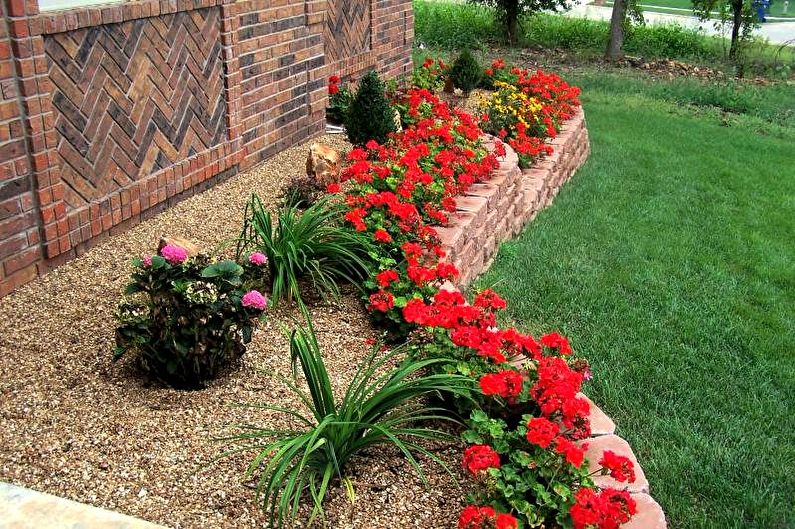
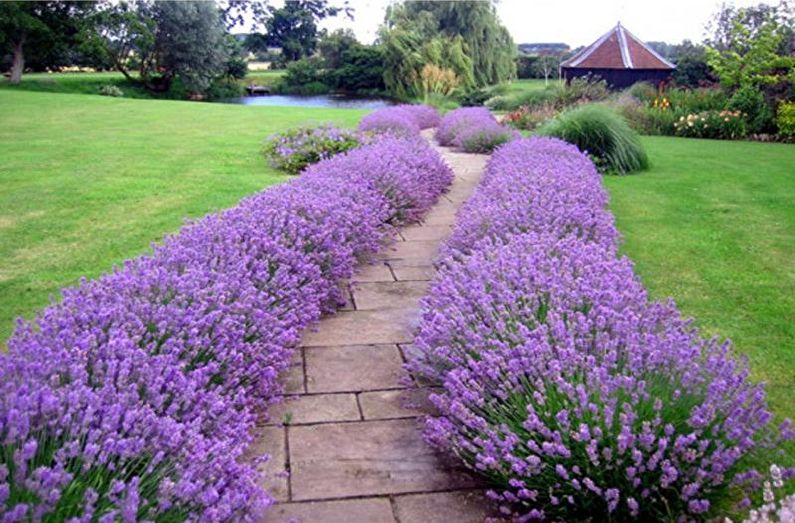
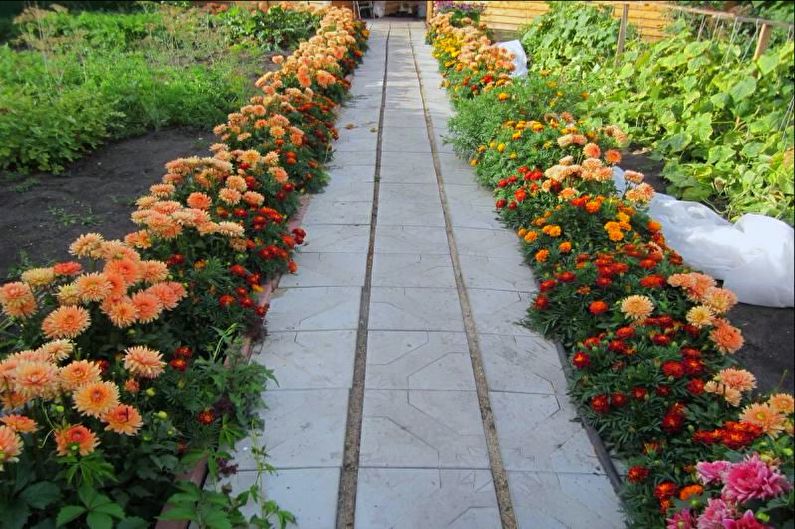
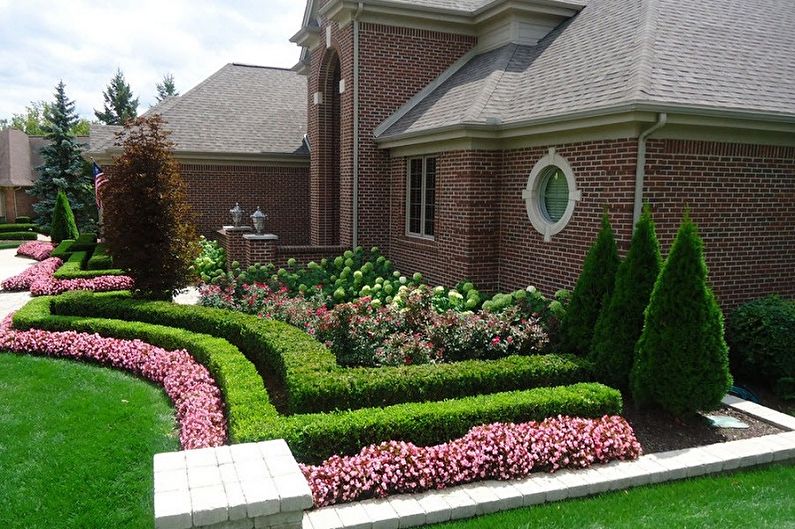
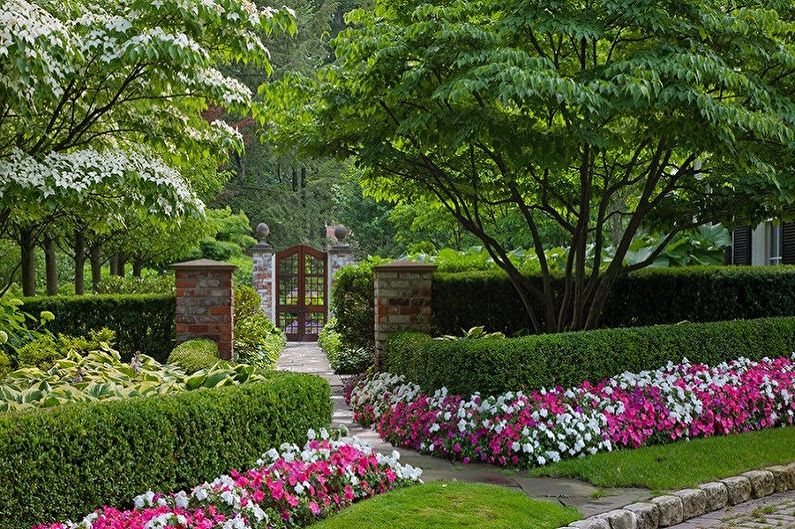
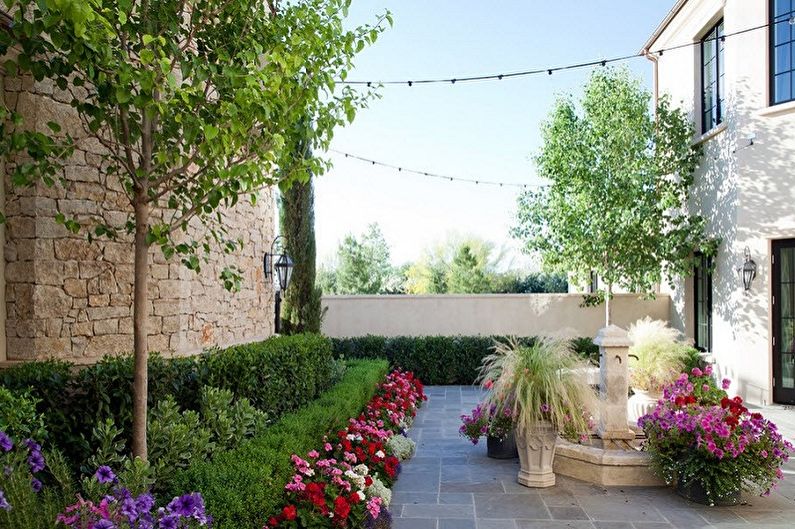
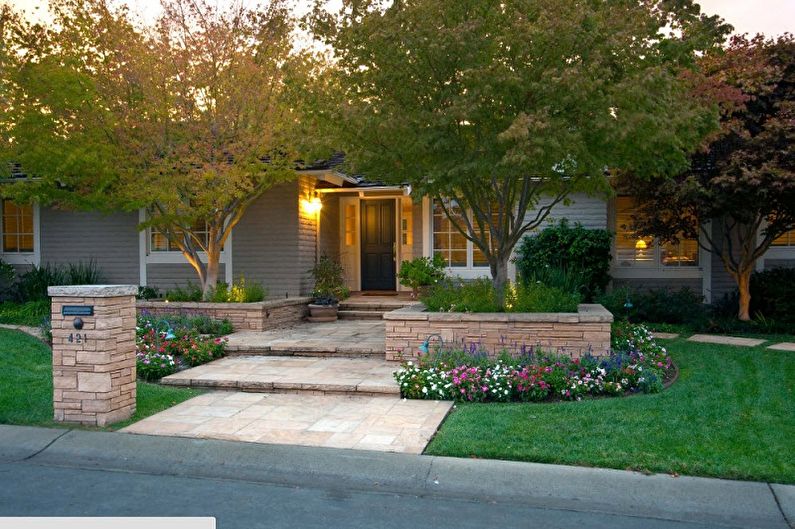
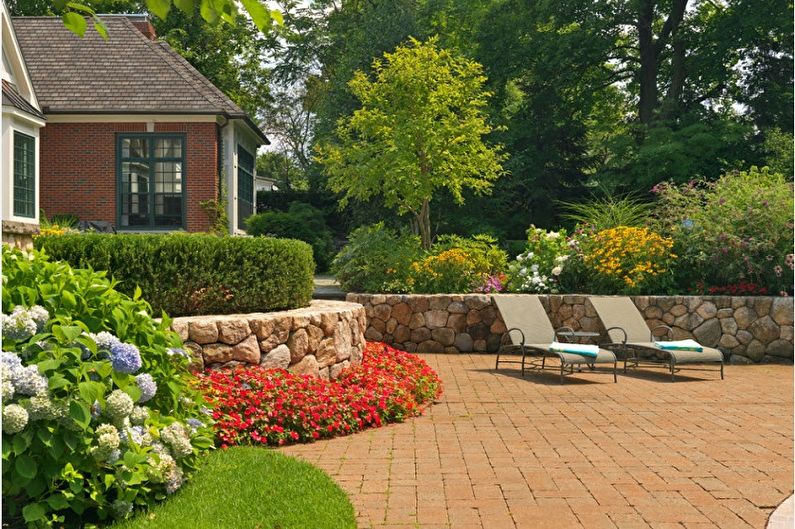

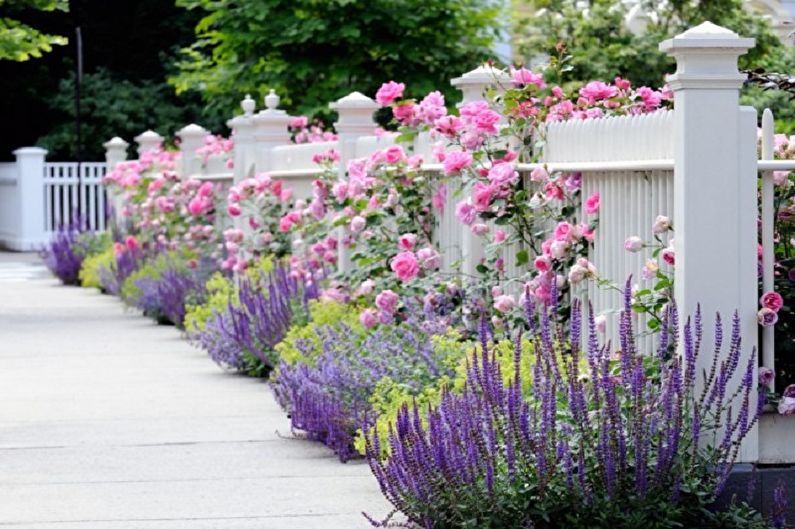
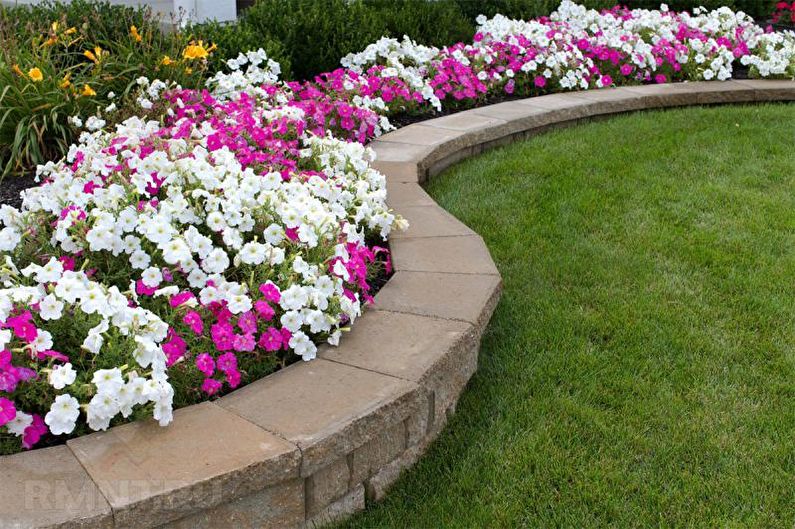
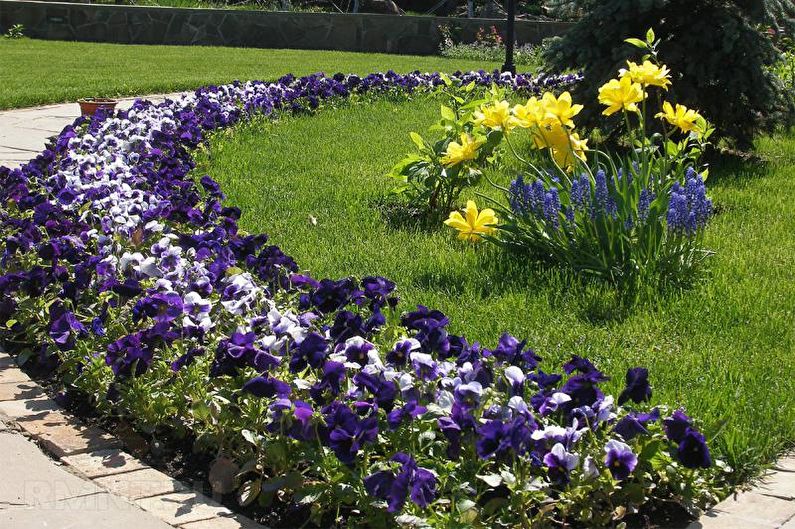
2. Discount
The original name of such a flower bed comes from the German language and literally translates as "bed". This flower garden is in many respects similar to a border, however in our case it takes not just a linear shape, but a rectangular one, as it is planted in several rows. Often, similar works can be found in recreation parks.
Very well, this design move looks around the perimeter of buildings or, as in the previous version, near the tracks.
Designers distinguish two main ways of organizing plants - in a continuous row and in several lines symmetrical to each other. Also, based on where you want to create a discount, create a two- or one-sided flowerbed. For example, a two-sided variation organically surrounds a tall plantation, just pay attention so that it does not block our flower garden.
Too long beds makes sense to break into small sections with spaces. As for the width, it should be proportional to the length, as well as the total area of the garden area. Thus, in oversized territory, place narrow and short floral lines; for a large plot, on the contrary, suitable landscape objects. The configurations are very diverse, but ribbon or rectangular outlines are often used.
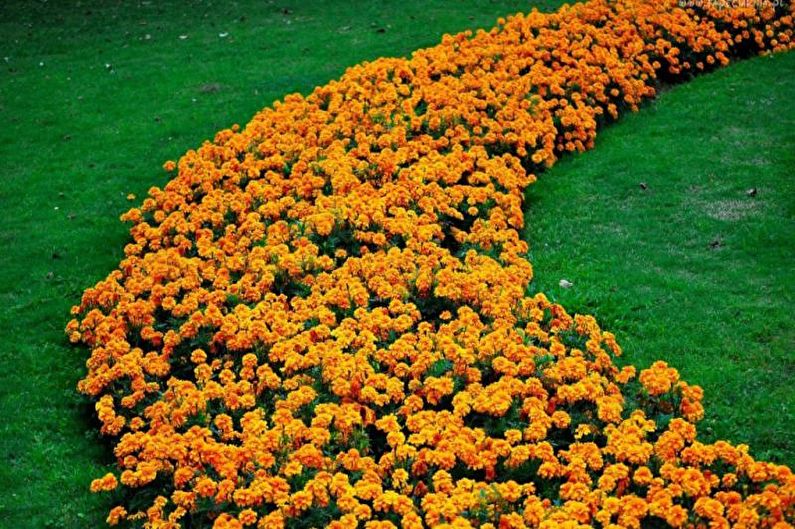
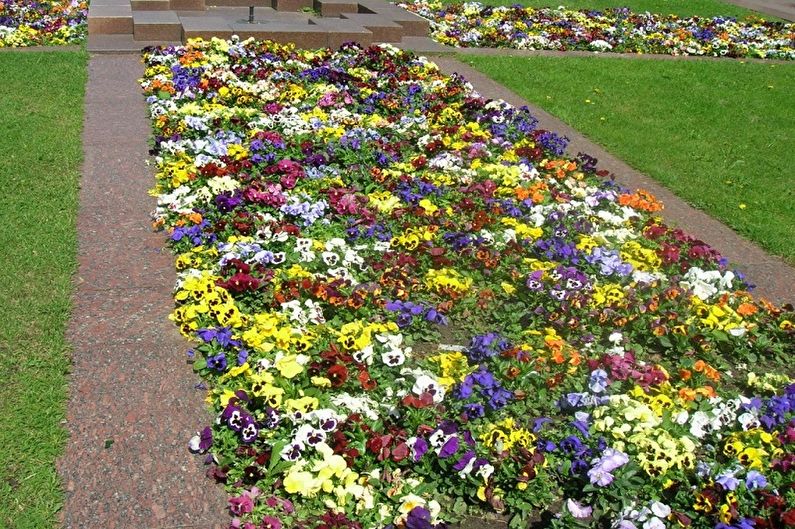
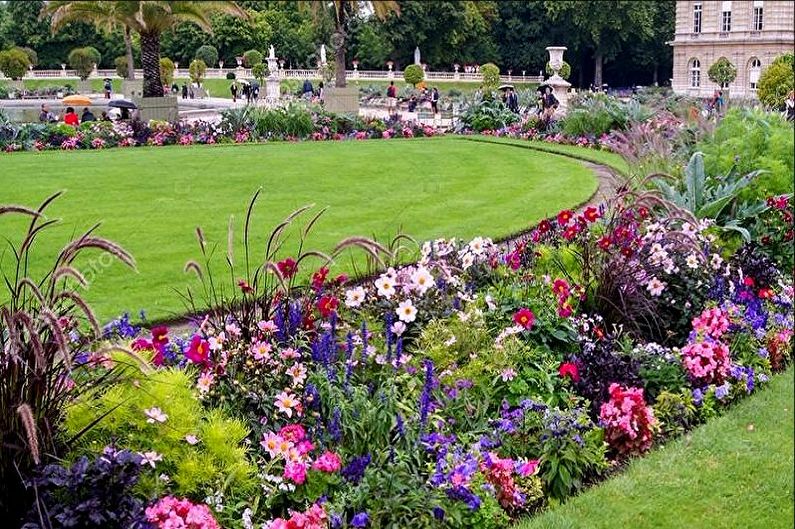
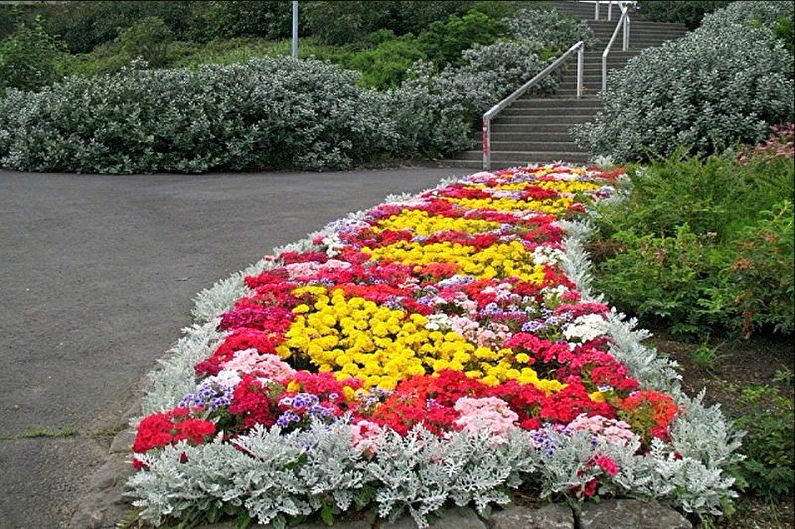
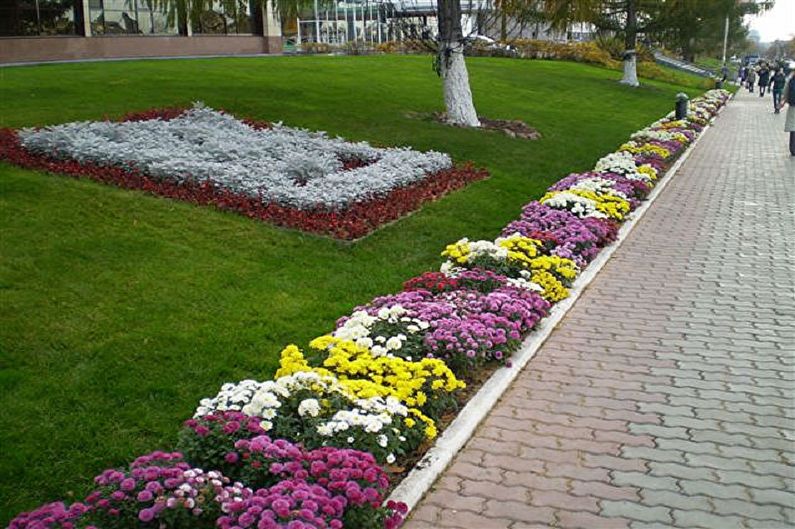
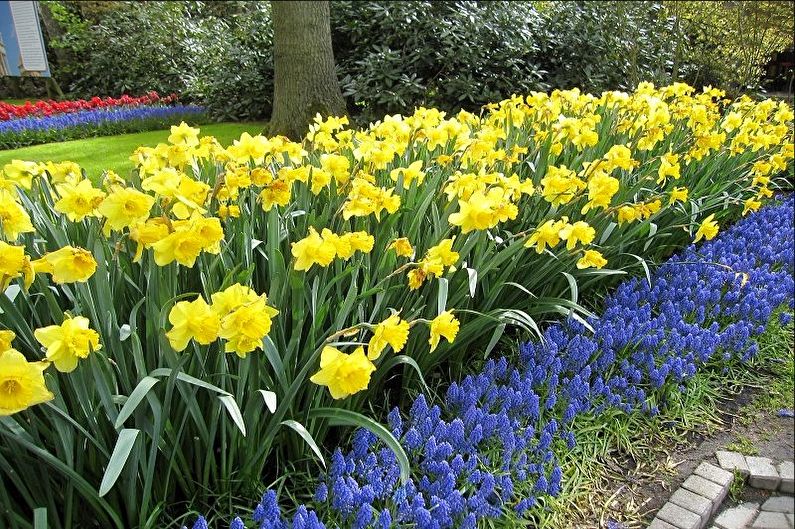
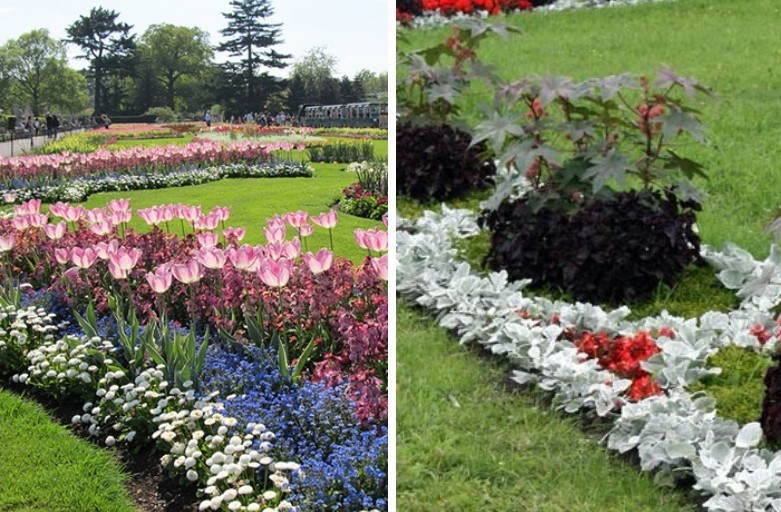
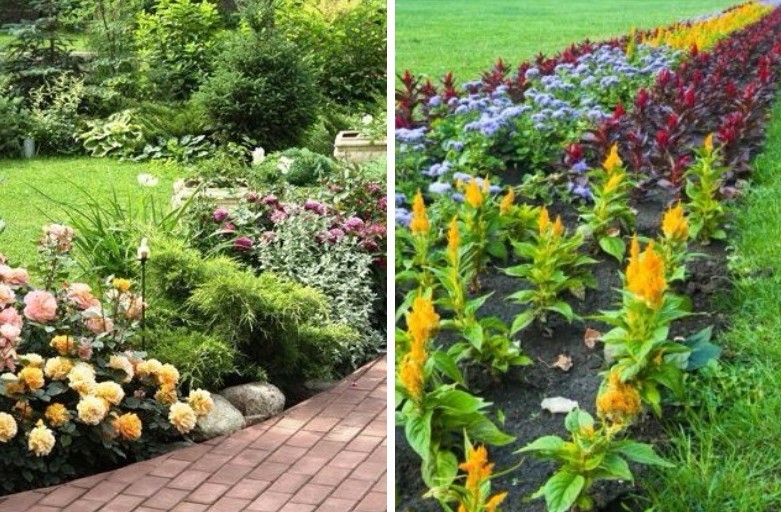
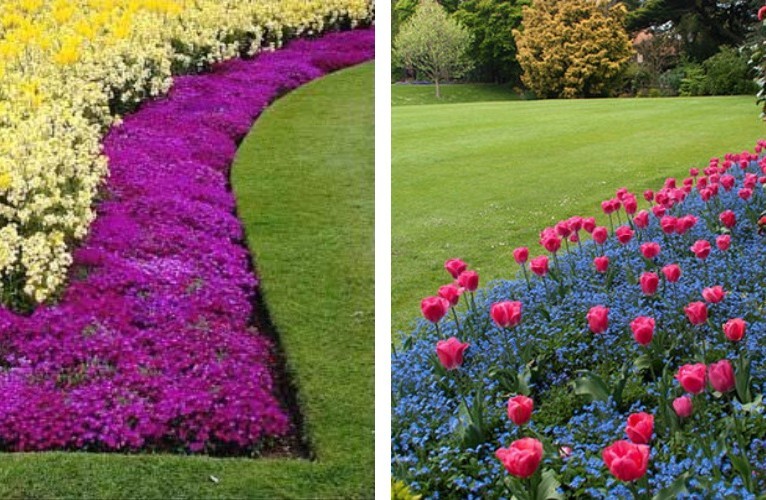
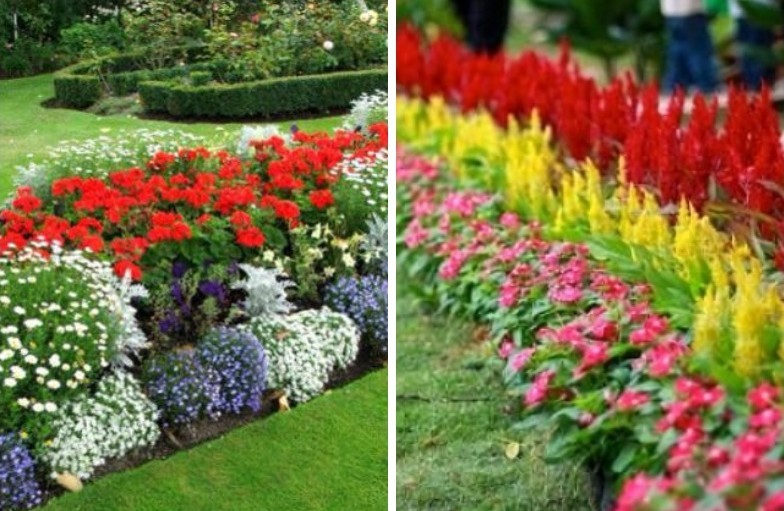
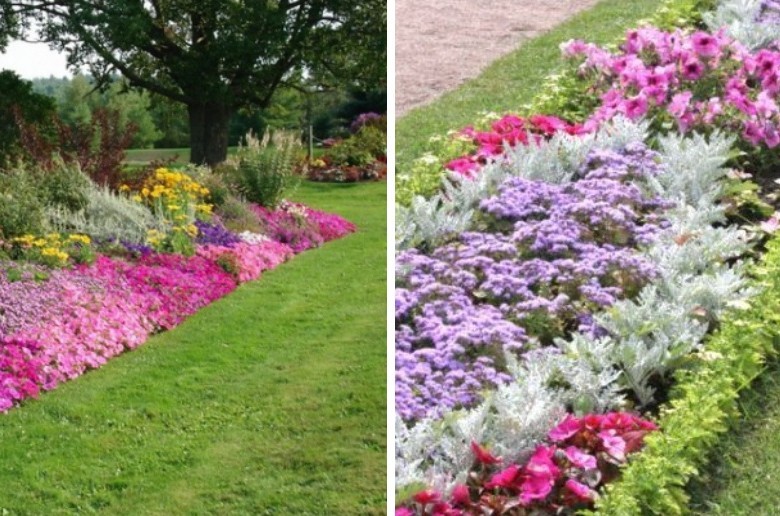
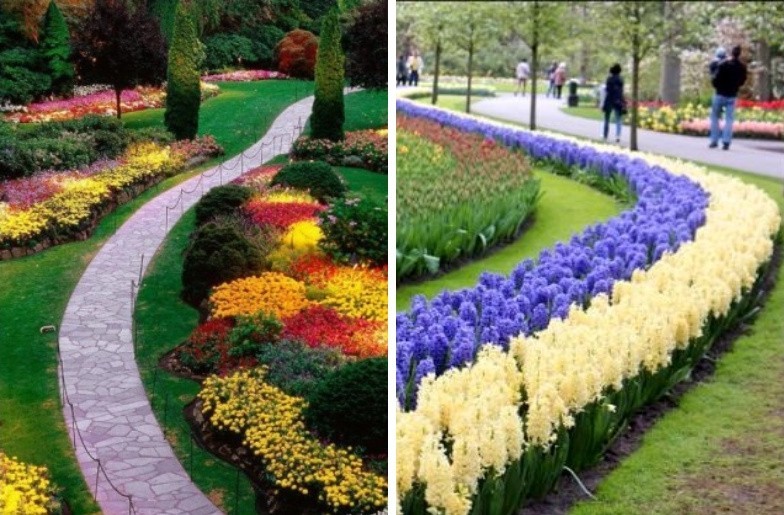
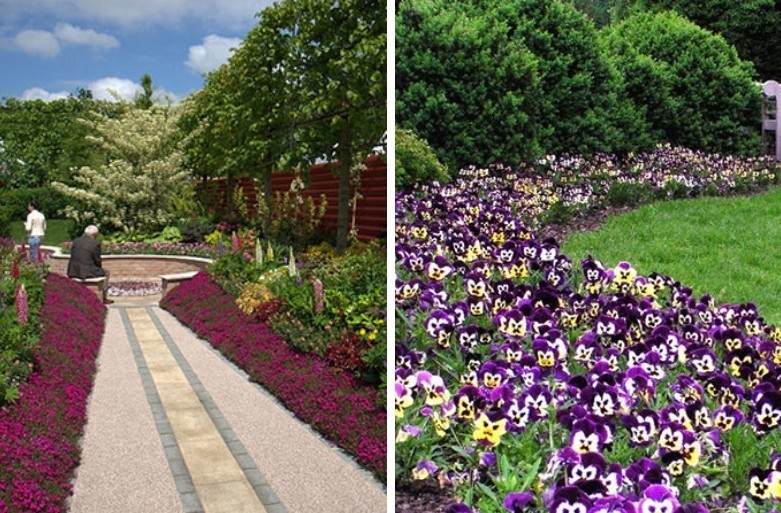
3. Mixborder
Mixborder is a combination of various plants in a free-form flowerbed. In recent years, this flower garden is particularly popular. This is not surprising, because it looks attractive, natural and relaxed in almost any area.
The somewhat chaotic look of the mixborder should not confuse you. Even such a flower bed has its own laws and rules of organization. Select a site from 2 to 5 sq.m., prepare the soil and divide the space into three parts of different sizes. If you are creating a frontal version, then in the background plant the highest varieties with unusual leaves. Then arrange the vegetation with straight leaves. Next are the flowers of medium size, the next group is ground cover, and annuals complete the composition. For a non-linear mixborder, say, round, a similar arrangement is suitable, but large plants are placed in the center.
It is easy to notice that the flower garden, by definition, has a complex composition. Therefore, care for it should be appropriate: water and transplant seedlings in a timely manner, cultivate, crop, fertilize it, and take measures to prevent diseases.
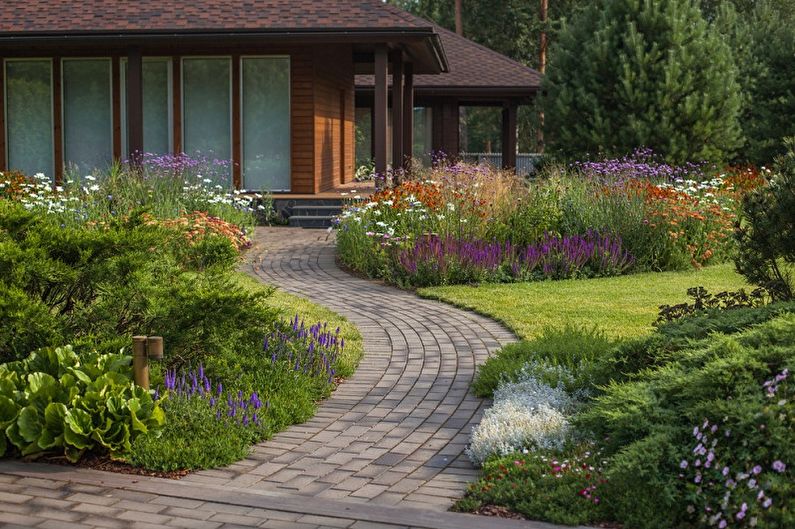
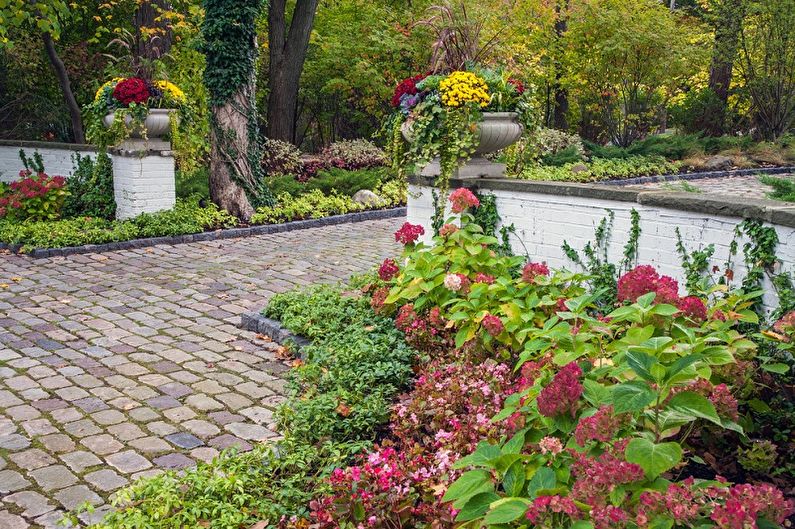
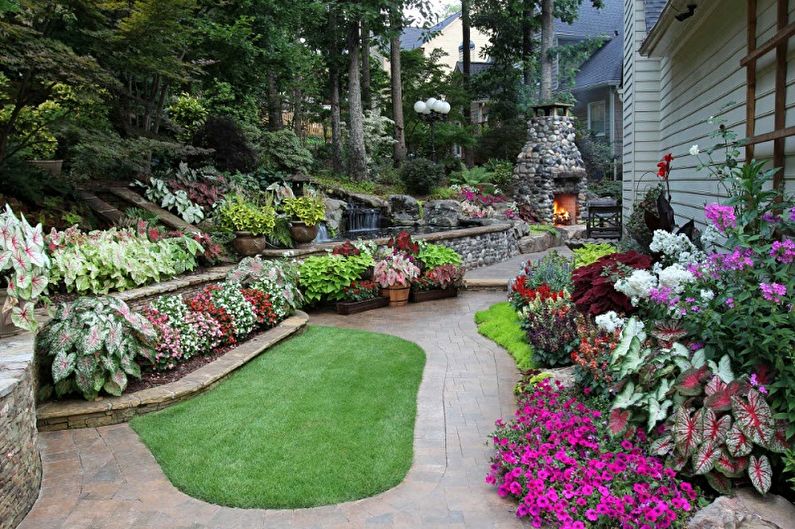

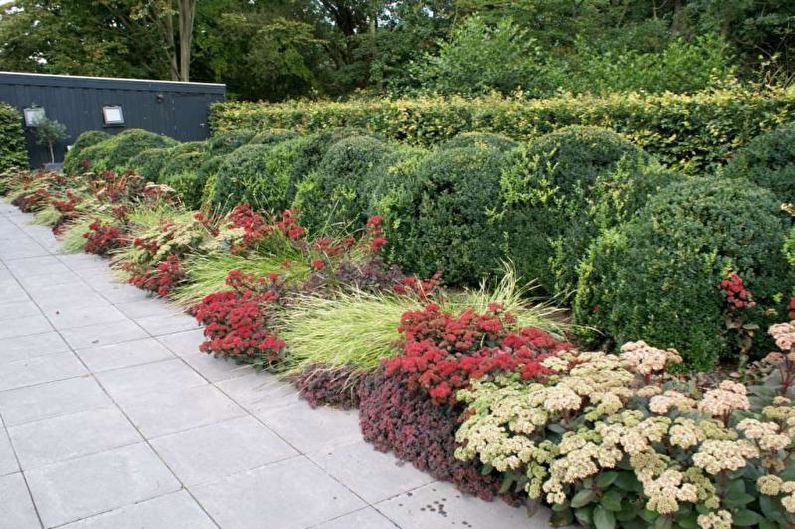
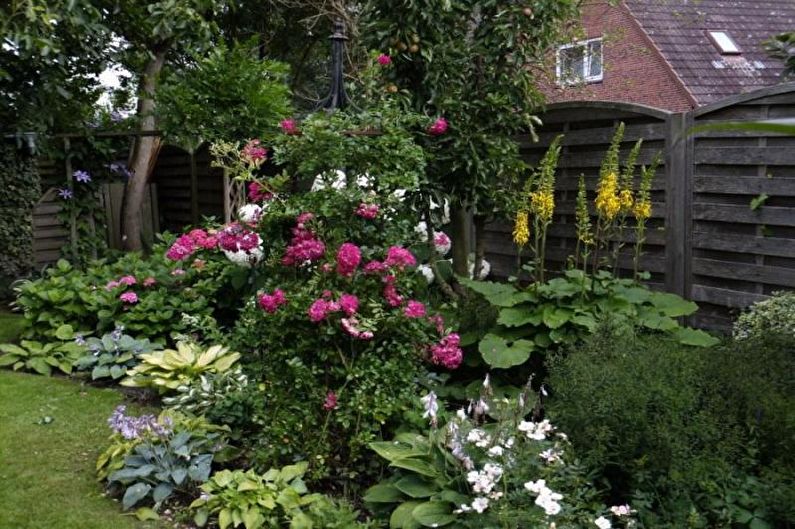

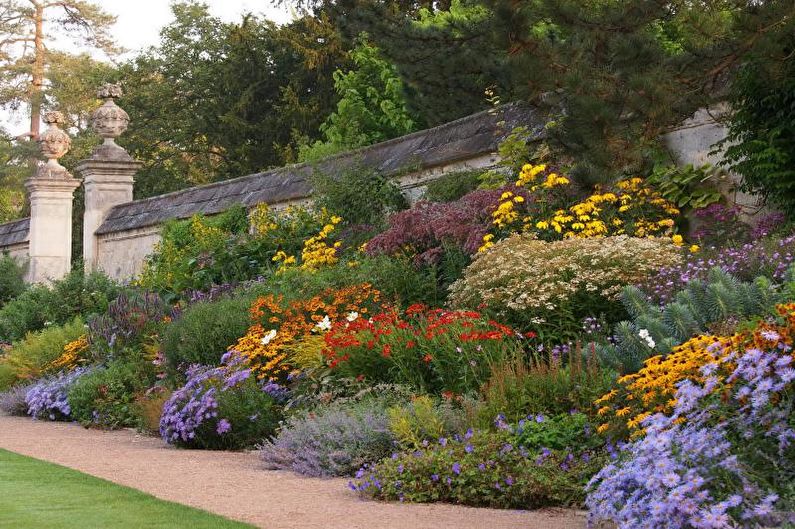
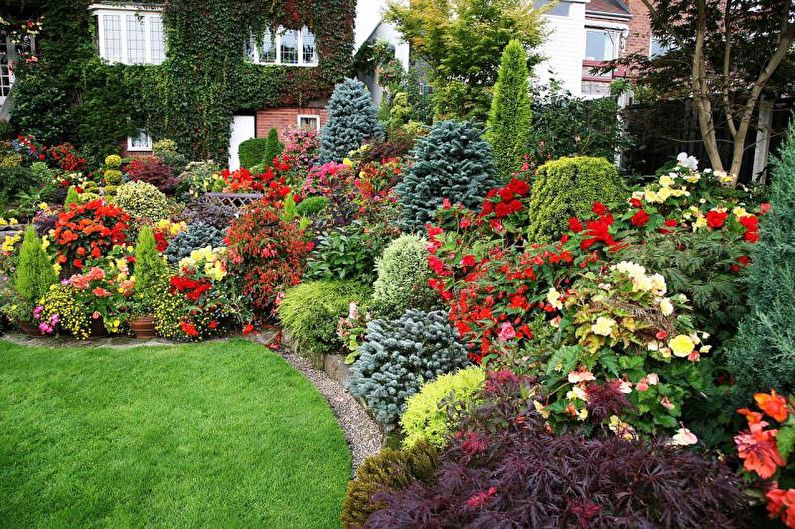

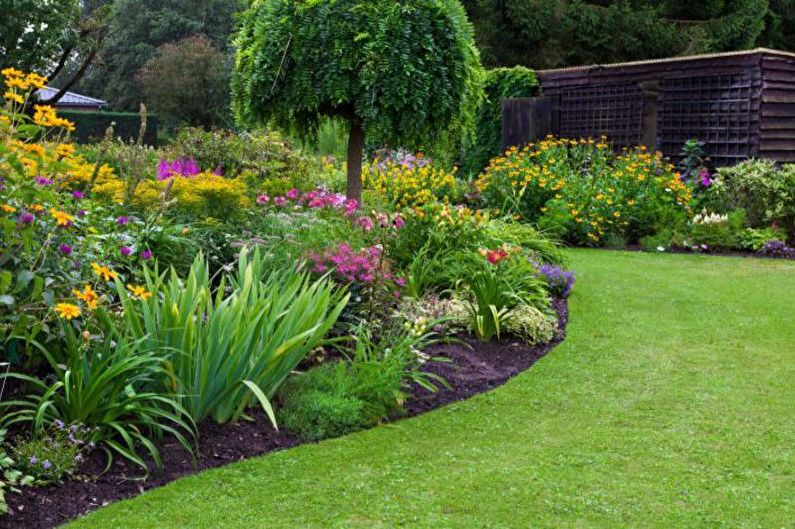
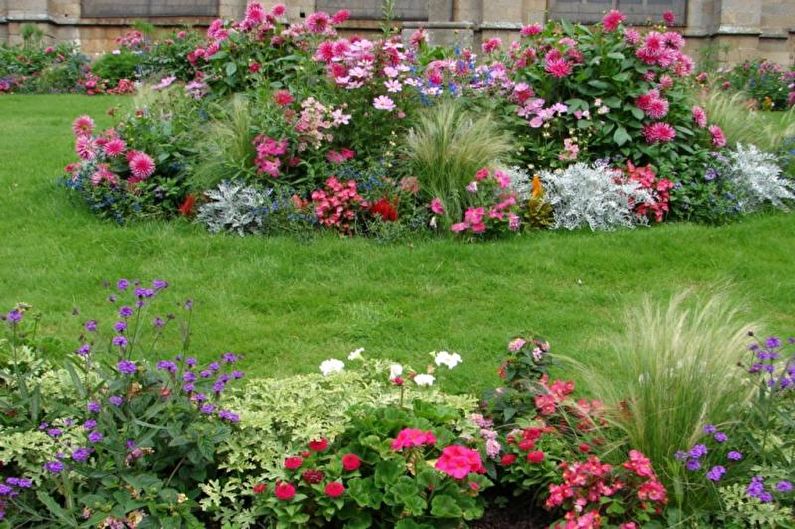
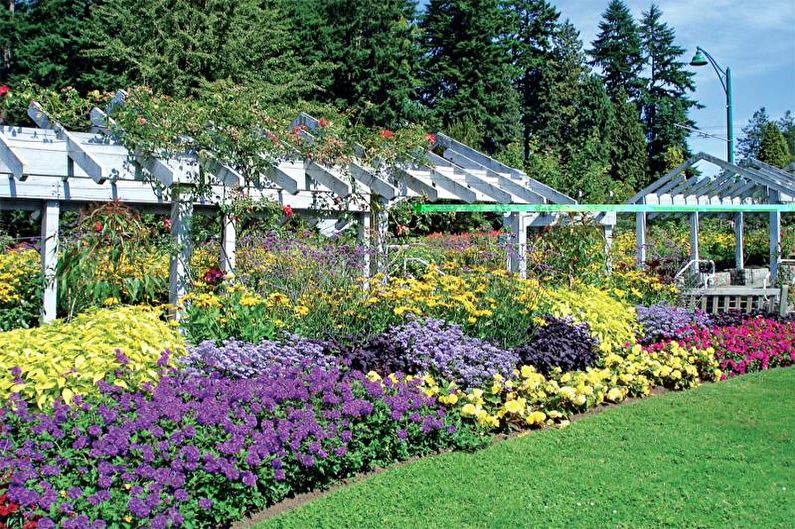
4. Stone garden
The stone garden (rockery) is an excellent choice for a site in east, rustic and some variations of classical style. The stone elements are organic, surrounded by structures and structures made of similar materials. You can create a spectacular composition on your own. To get started, decide on a style solution for the entire territory of your private home ownership. Get a clear view of the terrain that you have to deal with. If the area is in some depression, use the retaining walls or arrange a terrace.
The order of work is as follows:
1) fixing the stones with dry masonry or using limestone mortar;
2) planting of vegetation in the gaps;
3) if necessary, supplement the rockery with gravel or a small reservoir.
When choosing stone blocks, keep in mind that they most naturally look in different sizes - harmoniously alternate large objects with medium and oversized ones. In addition, proportions are important in everything, so do not plant too tall plants and flowers. Give preference to dwarf coniferous trees - they will form the basis of the composition.
In order to have a correct idea of creating a rockery on your site, we recommend that you familiarize yourself with the Japanese, European and English traditions of creating stone gardens. Each of them is characterized by its own style and selection of vegetation.

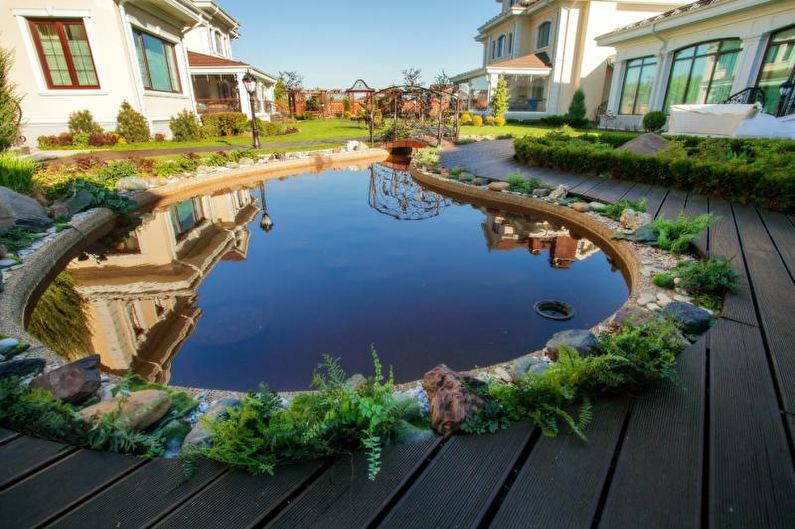
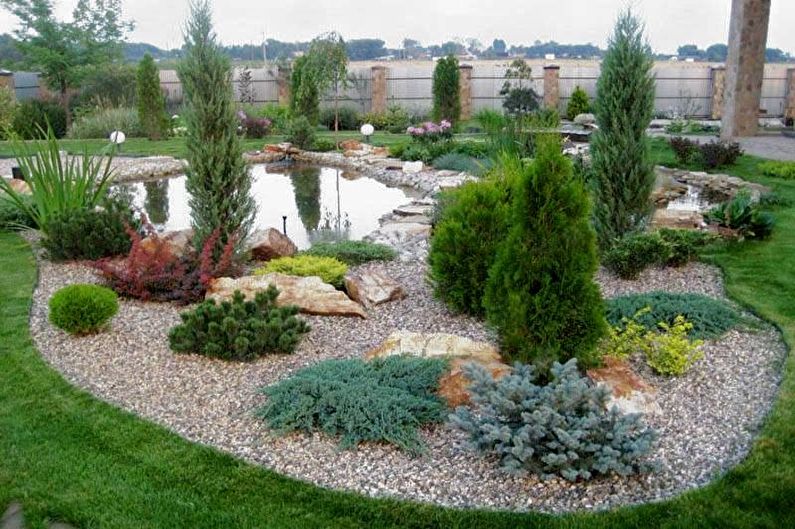
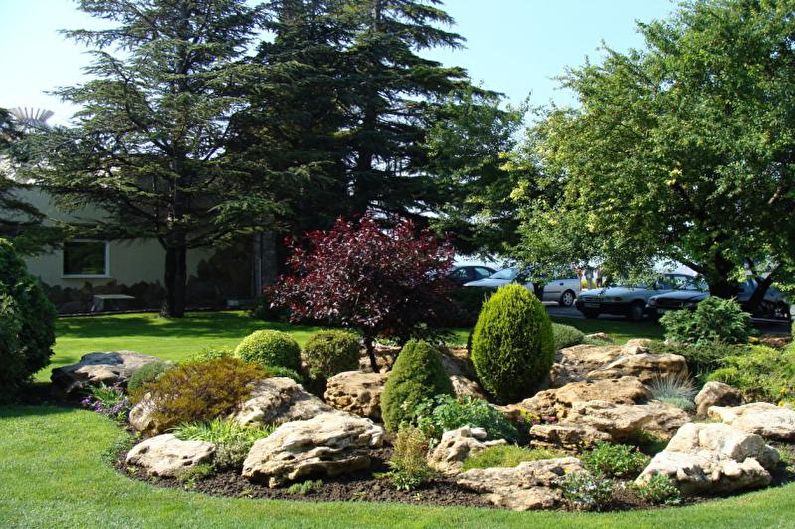
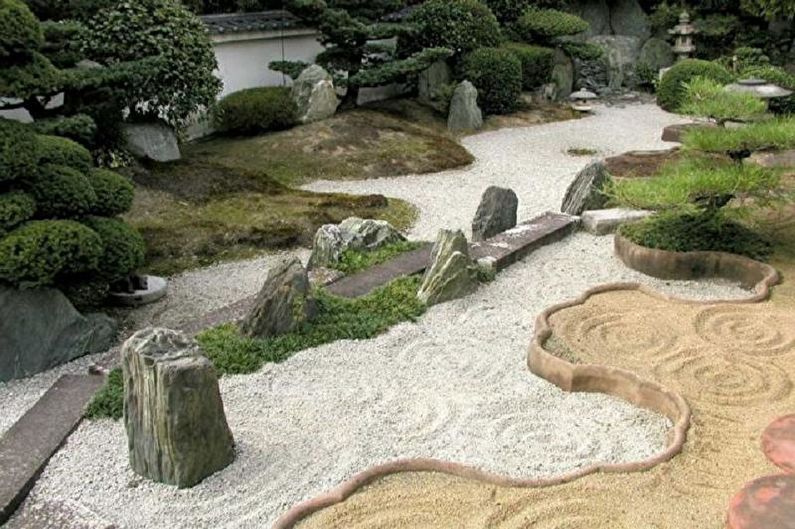
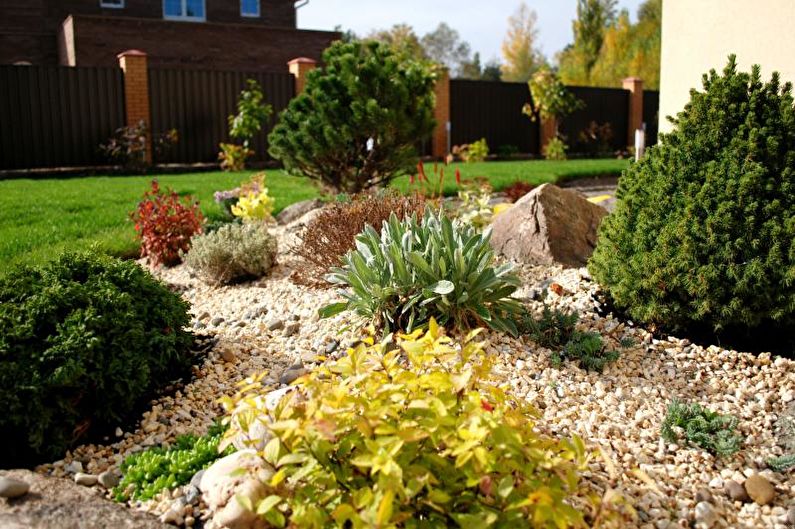

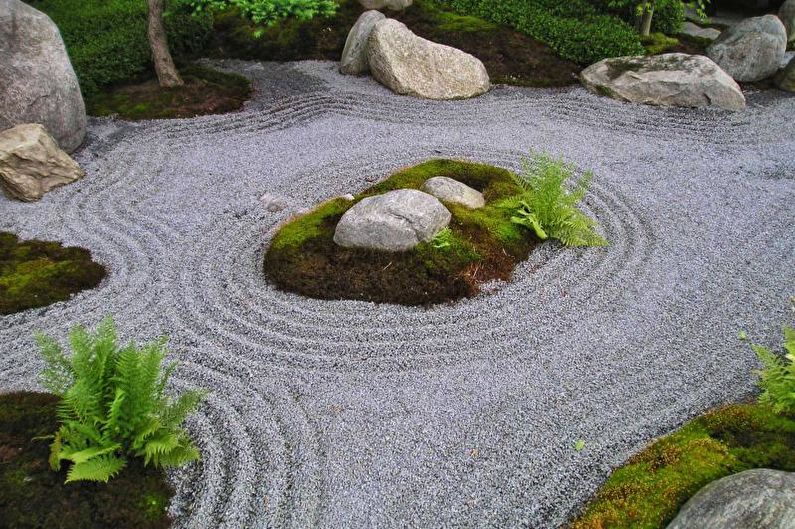
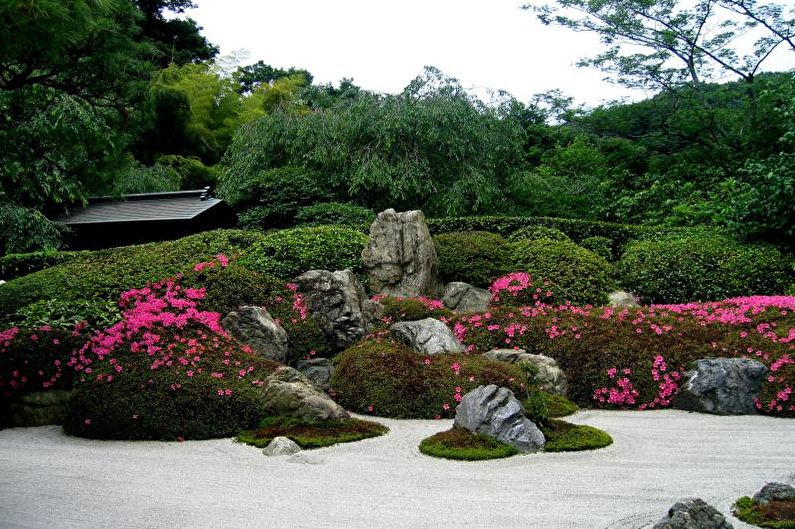
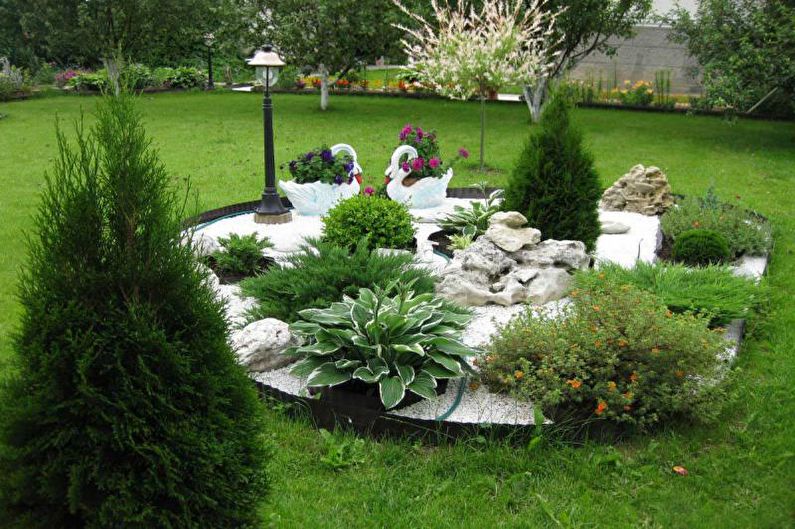
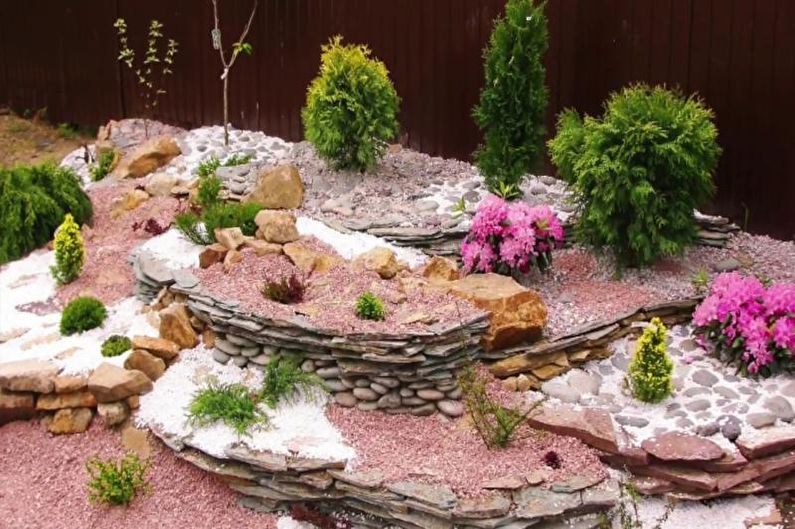
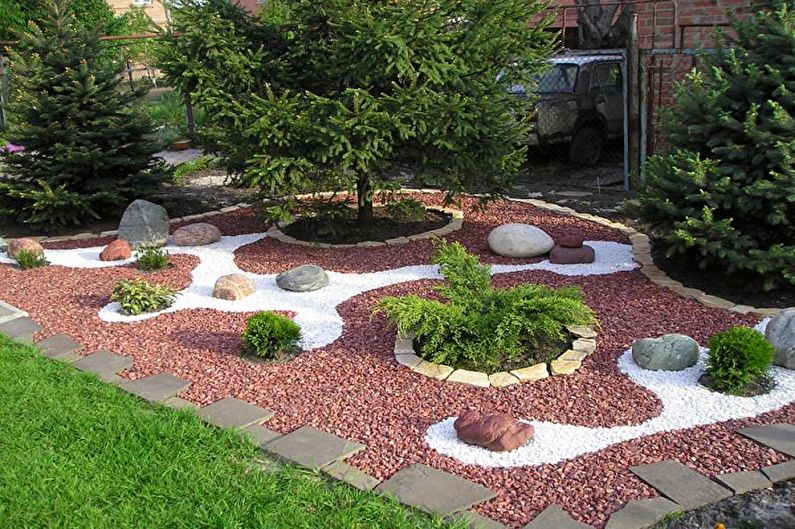

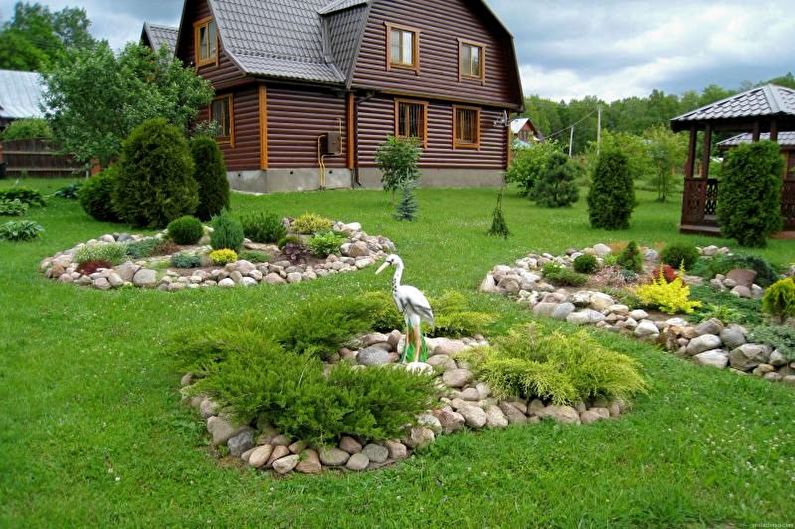
5. Modular
Modular flower beds organically fit into a minimalist and classic landscape design. The flower beds arranged in the paving look concise and neat. And, importantly, only a few such polygons or circles can transform the area of your yard, and each owner is able to organize them independently.
Decorations are created in specially designated places between plates, arranged on the ground or in containers among the lawn. The location can be any: a patio, a walking area, a garden path, a paved wooden platform. For traditional style decisions, especially if there are rounded trees, bushes or a pond nearby, flower beds of a similar configuration are suitable. If the site is designed using straight lines, square or rectangular plates, stop at the same strict outlines for the modules.
As for the selection of plants, then at your disposal is a very wide range of variations. For example, you can combine railings and petunias, planting them in rows diagonally. In the round module, use one or several varieties: plant the highest plant in the center, and arrange the rest as the growth decreases. A similar composition can be composed of Aruncus dioecious, spikelet lyatris and hosts hybrid.

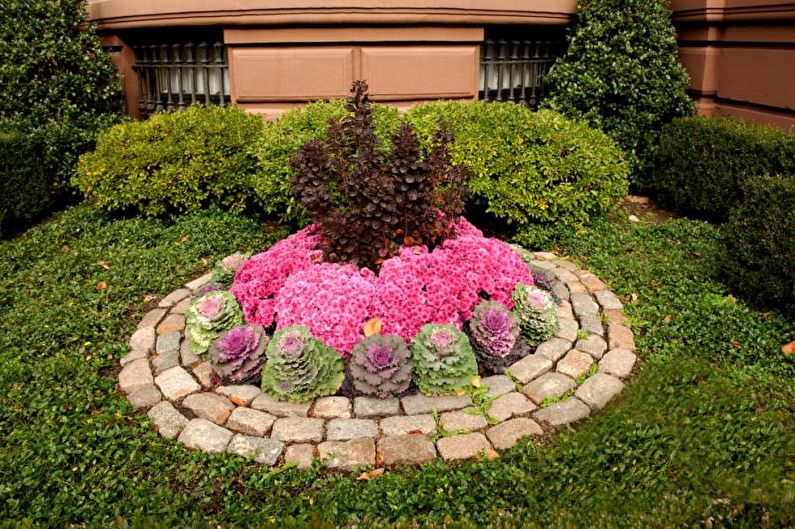
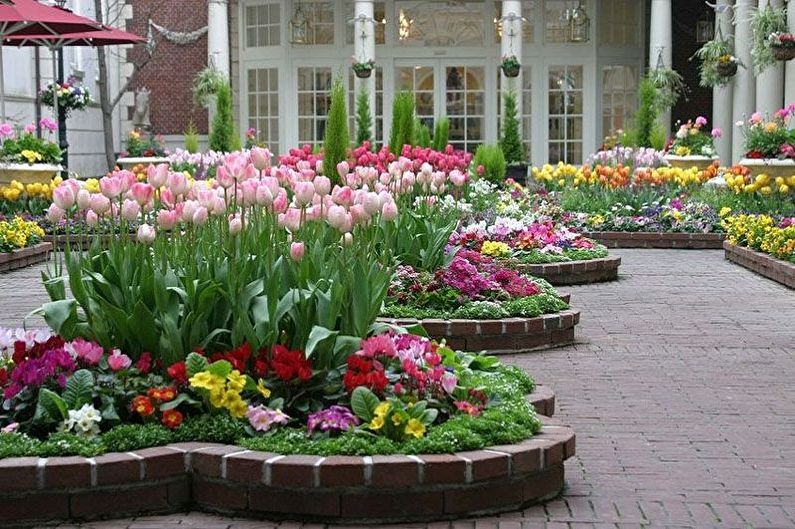
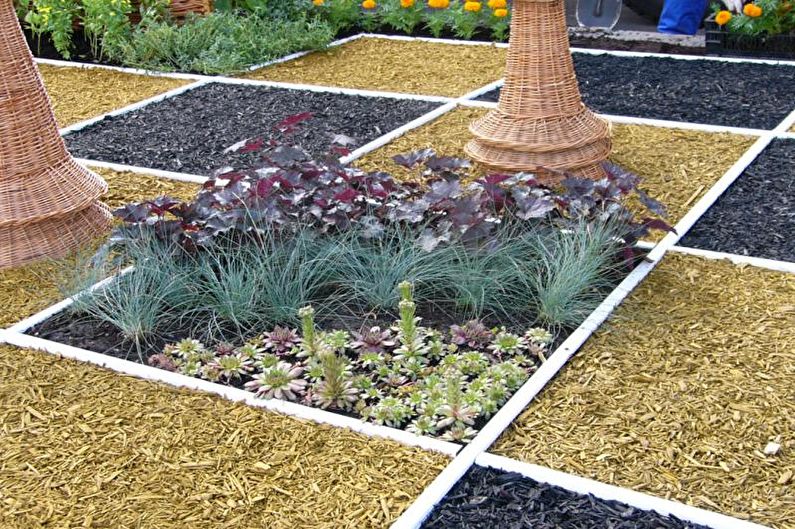
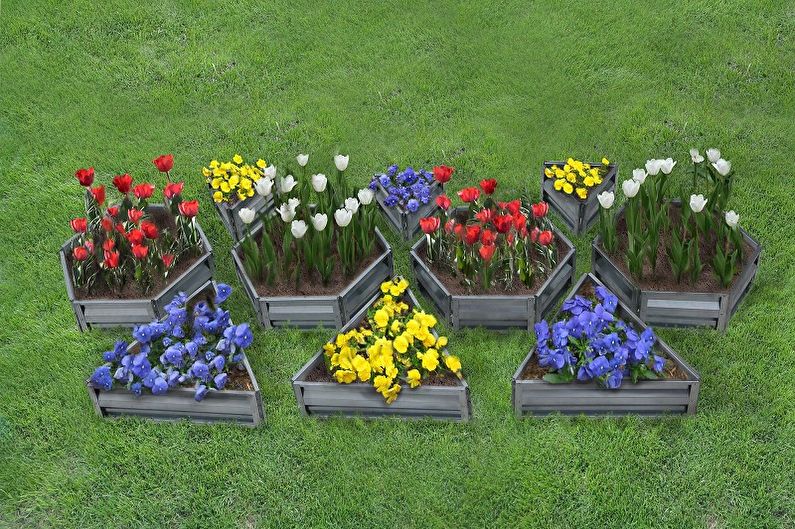
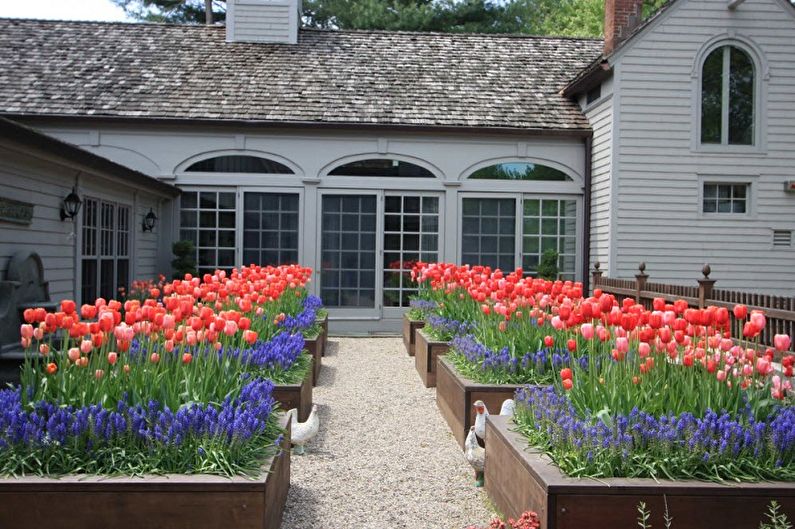
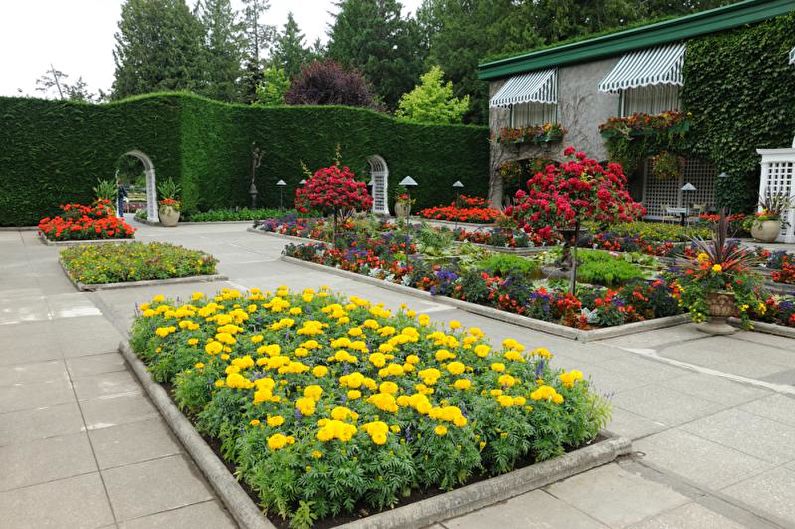
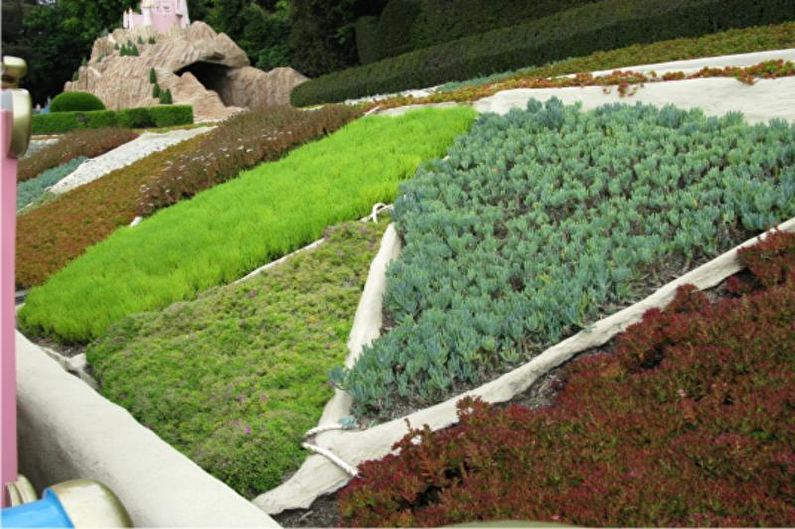


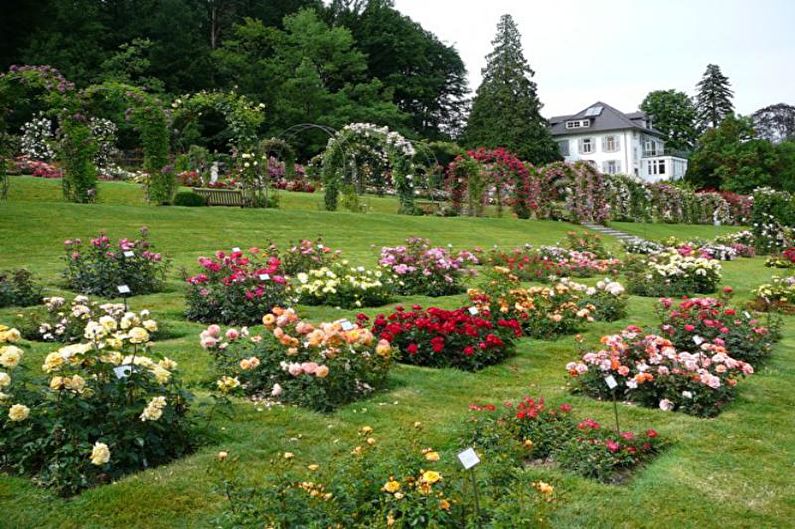

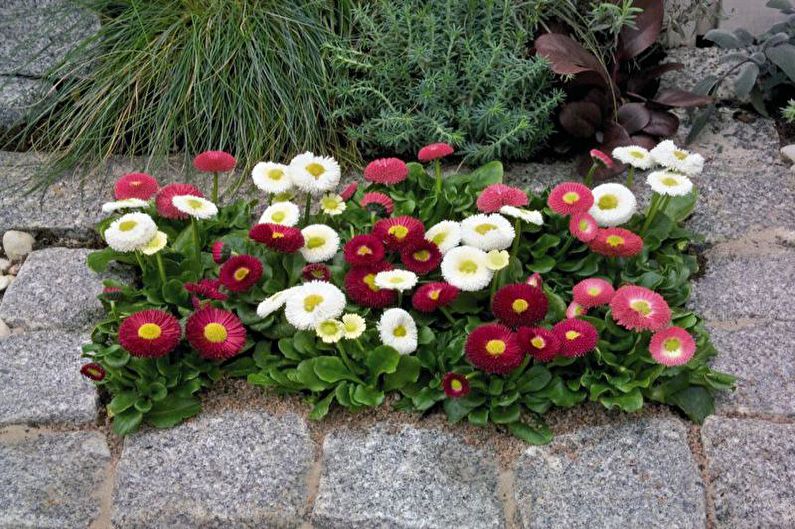
6. Multidimensional
Multidimensional flower beds differ from others in their well-thought-out concept and location on auxiliary structures. These are the same flower beds in the form of butterflies, swans, ladybugs, which repeat a pre-designed ornament.
Flower towers and hills look very original. The shape of the creek is very popular. For example, flowers can spill out of a barrel or pitcher. The herbal composition is organically complemented by an artificial pond.
You can also experiment with used household items. The options here are unlimited: a chair, a bed, a chest of drawers, a kettle, a lamp, a bicycle, a cart, a car - the list goes on and on. For these purposes, different types of vegetation are suitable - from green climbing to colored perennials or annuals. If these are flowers, then they are planted in pots and placed inside the selected item.Such design objects impress with their creativity, because each of them is unique.

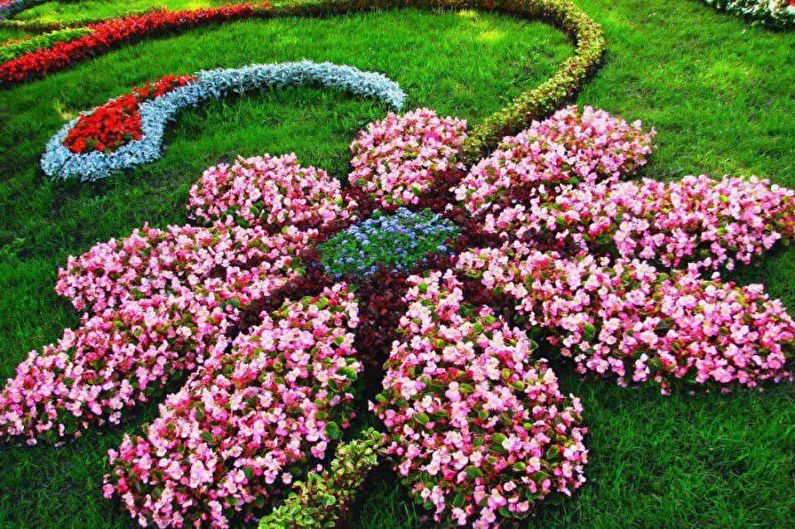
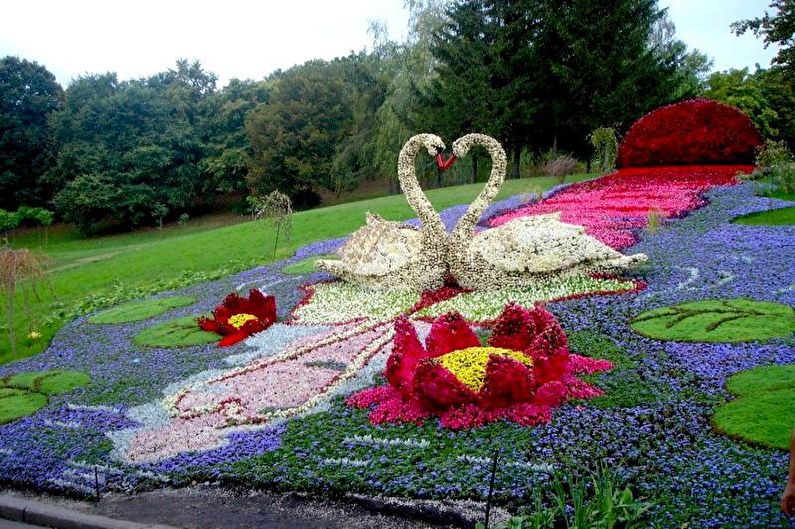
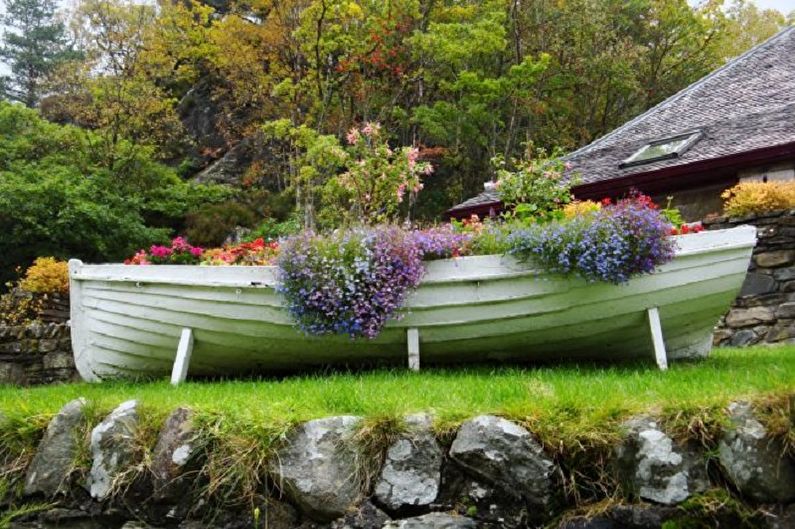
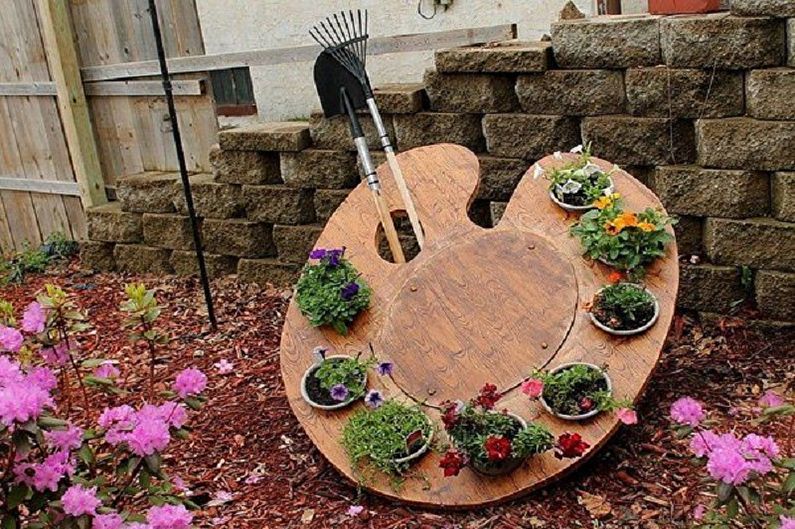


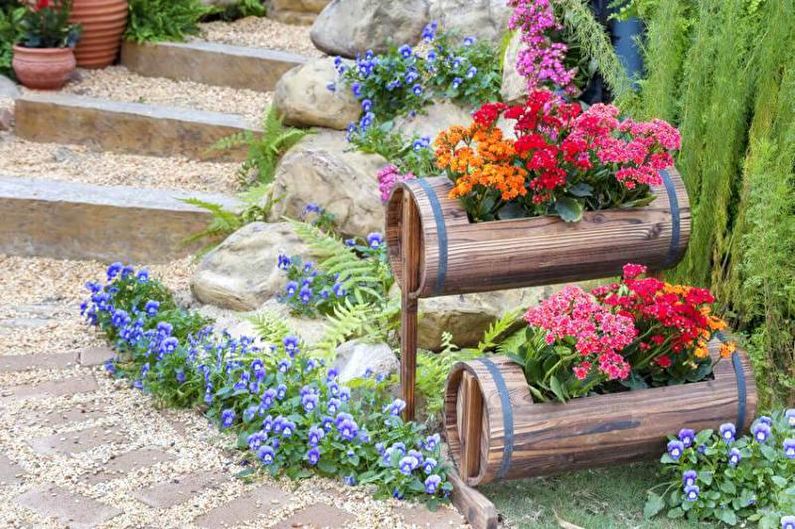
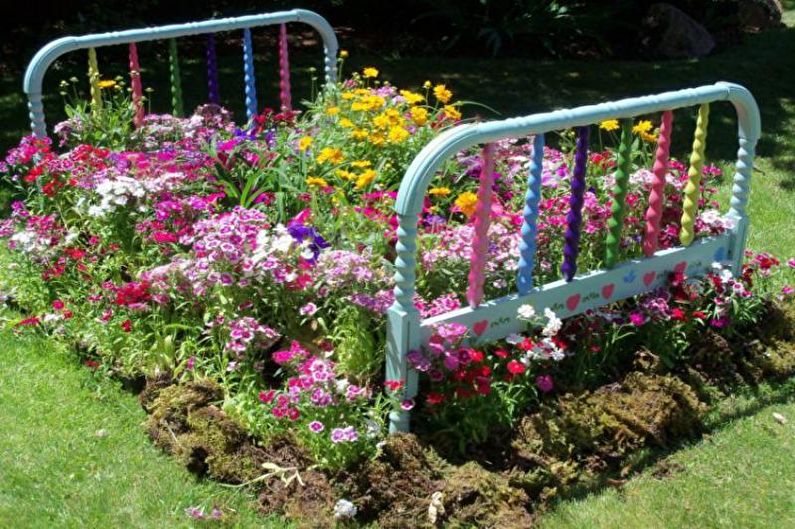
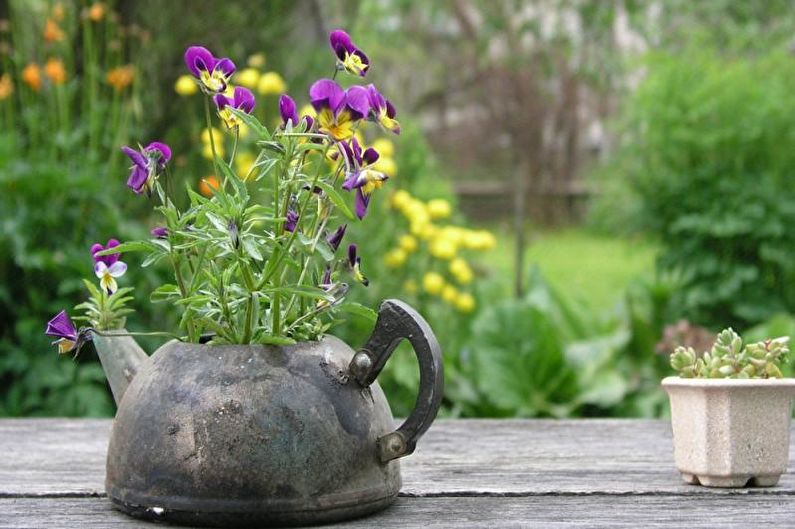
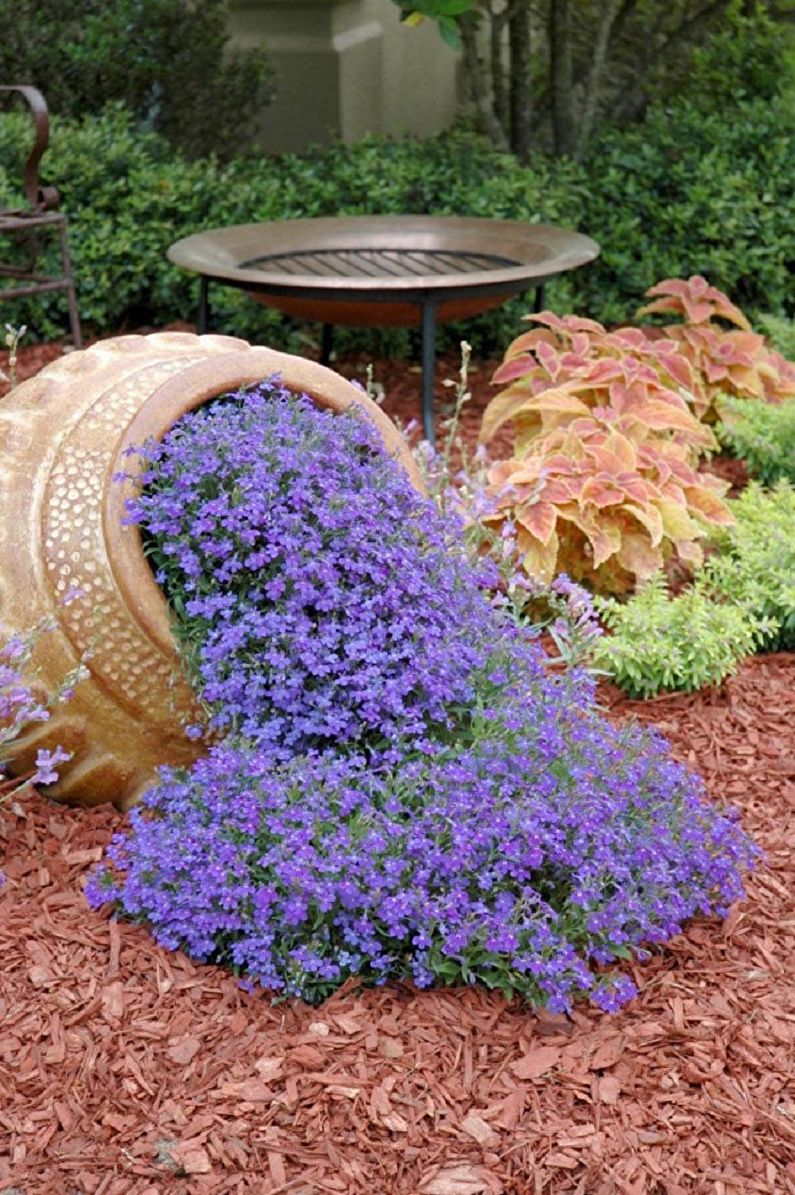
7. Monocots
Based on the name, it may seem that mono-flower consists of only one type of flower. This is true, but not always. Sometimes a general shade, shape, and overall the plants should be very similar, although flowers of the same variety are also suitable, but in different colors.
Despite its external simplicity, such flower beds are one of the most stylish and seasoned. Another undoubted advantage is that, compared with other types of beds, caring for such seedlings is simpler. Without spending a huge amount of time and effort, you can easily maintain the vegetation in excellent condition.
In addition, to unleash the potential of the selected variety, it is not necessary to make complex combinations, and the link to the overall landscape design is at a minimum mark. The only thing you really need to pay attention to is the size of the flowers. It should correspond to the proportions of the surrounding area so that your flower garden does not get lost against the general background. In the best way, the decorative potential will be revealed in the company of a tiled platform, lawn or undersized plants.
Among the most common monocots can be identified such of them: rosary, peony, gladularia, lilinaria. For the first type, shrubs of the polyanthus variety or floribunda roses, which are distinguished by lush and long flowering, are suitable. They can be surrounded by a border of stunted roses or wicker varieties that encircle a pergola or wall.
Peonies are distinguished by a variety of varieties with different flowering periods. Having picked up several species, you can organize a luxurious mono-flower, which will remain attractive until the cold autumn.
Gladioli are majestic, sophisticated and elegant. Such flowers are quite distinctive and decorate even a small front garden. Delicate lilies look beautiful surrounded by a lawn and other elements of landscape design in a similar color scheme. Plants must be planted in a well-lit place, protected from gusts of wind.
